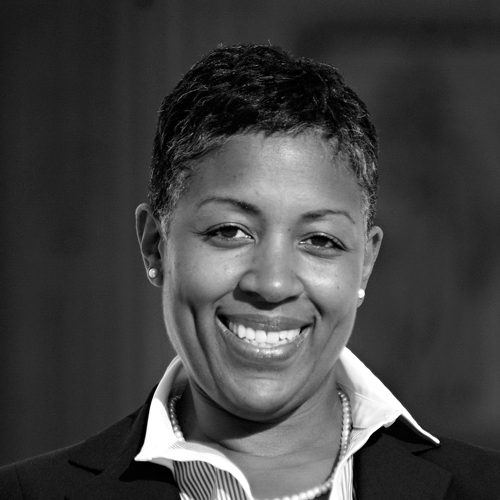The atmosphere at the Mandalay Bay Convention Center was a whirlwind of color and movement. Everything from jackets to shoes to fur-lined ponchos was on display; more than 20,000 people circulated through the building to take in all of the vendors presenting collections of men’s, women’s, and children’s apparel and accessories. The vendors met with buyers and licensing experts for three packed days to pitch brands, suggest deals, and sign contracts. One of the brands displayed at the mid-August trade show was a relatively new one for the company promoting it, though the company itself is America’s oldest family-owned and -operated retailer of sporting goods. Modell’s Sporting Goods hoped fellow attendees would notice their new Smiths brand apparel and, even better, would want to obtain licenses to carry it in stores throughout the United States. But the man from Modell’s shaking hands and meeting with fashion experts wasn’t a director of marketing or fashion. General counsel and vice president Mark Aarons added the director of licensing role to his list of titles so he could better market himself at conventions. He recently attended MAGIC, the trade show in Las Vegas, for the first time. It was part of the work in licensing he took on but didn’t seek out or expect. “Going in, I already knew licensing well, and I love the business side of being an in-house lawyer,” he says. “It’s just an exciting business to be in.”
Aarons wanted to be a lawyer from the time he was young, but he couldn’t guess he would eventually become the person in charge of signing new retailers to produce Smiths-branded work apparel and outdoor sporting good lines. When he was younger, he appeared as a witness on 14 different occasions for a homicide in his hometown, sparking his interest in the legal system. He has what he calls an “indescribable passion” for justice, and he attended law school immediately after completing his undergraduate work.
The jump, then, from lawyer to director of licensing may seem like a far one, but it was natural for Aarons to move into the position. When the role opened at Modell’s, Aarons was the company’s first choice. “I don’t think there was even a short list of candidates,” he reflects.
After graduating from Brooklyn Law School, Aarons joined Candies International and handled a number of issues for the footwear line, including employment law, trademarks, and licensing. He joined the business side of the legal profession early and worked in corporate law at several firms before joining Modell’s. That long career has given him the insight to help drive Modell’s business.
Aarons doesn’t need to rely entirely on that intuition, though; he has assistance from others in the company, for which he is grateful. Merchandising and marketing experts advise him, and Aarons manages the licensing business and does the contract work. To say he isn’t on the creative side is to undersell his natural instinct about the product, though. When one of Smiths’ licensees displayed an upcoming line of apparel for approval, Aarons picked out the nine items that he would buy. Eight of those nine items had already been selected by Modell’s fashion buyer to move forward with production. “Since moving into this position, I’ve learned to recognize different fibers and the value of different materials,” he says. “I’m something of a merchant-in-training.”
Much of Aaron’s strategic work in the company is to promote the brand that is new to Modell’s but has been around for more than 100 years. Aarons describes Smiths as “what Howard Roark (an idealistic architect and the protagonist of The Fountainhead) would wear.” It’s easy to see the comparison. “It harkens back to that time, that look, that feel,” Aarons says. “The brand’s boots are the sort of rugged, waterproof, thick-soled shoes good for a workday or a hike.” The pants are in conservative colors, and most of the jeans are lined with flannel. The jackets come in red, navy, gray, and black, and many are lined with fleece. The Smiths brand has all the appeal of other national brands, but the prices—around $20 for a pair of pants and $30 for a jacket—make it attract a wider market. “We’ve been selling Smiths for several years, and we’ve done very well with it,” Aarons says. “Now, we want to license it out for other categories, expand its offerings, and increase sales in the national market. We’re very happy with the direction it’s going in.”
Modell’s relies on trade shows, like the one in Las Vegas, and a robust marketing campaign to grow out the “work wear for life” brand. Smiths is currently available online and in more than 150 Modell’s Sporting Goods stores along the East Coast, as well as several other major retailers. The brand is doing well; overall sales of Smiths apparel exceeded $10 million in 2013 and continue to grow. In the next three to five years, Aarons and CEO Mitchell Modell hope to grow the brand to more than $50 million.
As he worked his way through the booths, runways, and crowds at the Las Vegas trade show, Aarons wasn’t nervous, despite being in a role he hadn’t anticipated. He morphed into it. Aarons shook hands and introduced himself to the fashion experts, but he knew he couldn’t introduce himself as a general counsel—who would want to speak to a lawyer at a fashion show? Instead, he introduced himself as the director of licensing, and he took in everything the industry had to offer.

